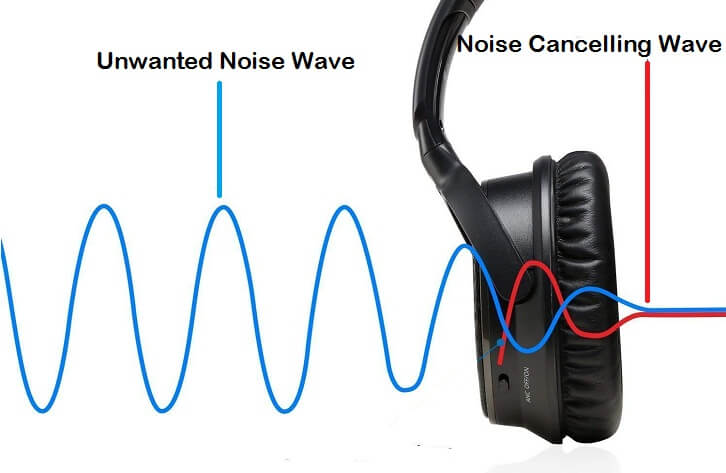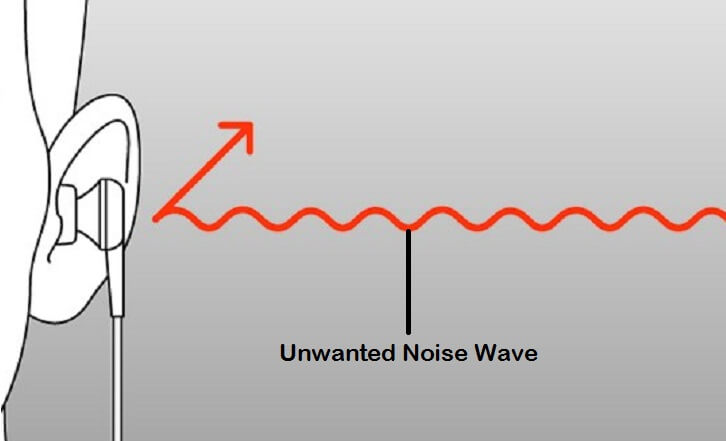How to Charge AirPods Without a Case
Discover the truth about how to charge AirPods without a case. Uncover myths, find alternatives, and safeguard your audio experience.
If you are a fan of a quiet setting or you travel a lot (whether by train or airplanes), you probably have looked up these two ways in which headphones keep out unwanted noise from interfering with our playlists. Noise cancellation also known as active noise cancellation (ANC) and noise isolation are both ways that reduce noise. The difference between noise cancellation and noise isolation affect the design of a headphone and its efficiency to block out as much noise as possible.
So, what is the difference?
The short answer is this: Noise cancellation blocks out external noise by using an in-built microphone in headphones to detect external noise, analyze it and generate an anti-noise signal to cancel out unwanted noise leaving only desired music audible to the listener. Noise isolation, on the other hand, does not make use of any electronics to block noise; instead, the design of a headphone is made to prevent as much noise as possible from entering the ear canal.
Now that we have that out of the way let’s delve deeper and get to see how each of these works, their pros and cons and finally a verdict on which you should choose.
Noise cancellation also called Active Noise cancellation (ANC) is a technology that uses active circuitry in the headphone to counteract or cancel background noise which might interfere with your playlist that’s why this feature is important when a trucker choose a headphone. While noise canceling headphones can also isolate noise (that’s why some believe that noise canceling headphones help improve Tinnitus), they are specially equipped with extra technology components inside the headphone’s casing that help in noise cancellation.
The extra components that enable active noise cancellation are a digital signal processor, a small microphone and a battery unit.
So how do these components work to cancel out noise?
First, the microphone in the headphone picks up unwanted sounds from your surroundings. The sounds are passed to the digital signal processor which analyzes the sound and generates an opposite sound wave. When the unwanted sounds and the opposite sound waves generated clash, they cancel each other out.

How Active noise cancellation works
A simple way of thinking of it is if the unwanted noises, whether train or airplane (see also if can you use Bluetooth headphones on an airplane) engine sounds, are a +1, then the digital signal processor generates a -1 which when combined with the unwanted noises (1+(-1)=0) cancels out.
Though Active noise cancellation is a good technology, it comes with its limitations. First, this does not cancel out rapid changing sounds like people’s voices. Active noise cancellation works well with steady unwanted noises like car engines, air conditioner or the drone of aircraft engines. Second, because this is an electronic process, it requires a battery to function. Although most people are used to charging their wireless headphones, it might come as a hindrance when you are far from a power source. Lastly, like most electronic circuitry, a noise canceling circuitry will produce a degree of hissing sound. The hissing sound produced might be heard causing interference to what you might be listening to.
Noise isolation is also known as passive noise cancellation; this is because it is based entirely on how good a headphone will physically block out noise from entering the ear. Just like earplugs or headphone earmuffs present a physical barrier that blocks unwanted sounds, noise isolating headphones work in the same way.

How noise isolating headphones works
With noise isolating headphones, reducing unwanted noise depends on how good a seal the headphone will create with your ears. With headphones, noise isolation will depend majorly with the type of earcup design, i.e., Open-back or closed-back and the size. In-ear headphones are most likely to create a better seal than on-ear and over-ear headphones.
However, when it comes to noise isolation mainly when dealing with in-ear headphones, it is good to find an earbud that is comfortable and fits you well especially if you want to block out unwanted noise.
Everybody’s ears are different, and whatever fits me might be uncomfortable to you. So before getting an in-ear headphone, always try to test it out (see also the best songs to test headphones here) or if you find your current in-ear headphone uncomfortable, you can always swap the ear tips with aftermarket ear tips and improve their comfort.
Both of these methods come with their pros and cons. deciding whether to buy noise-canceling headphones or noise isolating headphones will depend on different aspects, but most importantly your preferences should come first.
Generally speaking, both noise canceling and noise isolation block unwanted noise but using different methods. So which one is effective?
Noise canceling headphones especially closed-back headphones offer both noise isolation and active noise cancellation. However, active noise cancelling headphones rely more on the active technology to cancel sound than their design. So, while high-end noise cancelling headphones like the Bose QuietComfort 35 II, or the Sony WH-1000XM3 do the job right, cheap noise cancelling headphones might not be much effective in cancelling ambient noise.
With noise isolating headphones, their efficiency of blocking sound will depend on several factors. First, In-ear headphones will block noise better than over-ear and on-ear headphones. Second, the headphone needs to cover the ear better and prevent noise from leaking into the ear canal.
The active circuitry in noise canceling headphones can interfere with the quality of sound a headphone will give out. When active noise cancellation is turned on, you might hear a faint hissing sound which might be noticeable if no audio is playing. Though this causes a drop in the sound quality, it is less noticeable in the best noise cancelling headphones, while cheaper ones might be prone to this time after time.
Noise isolation requires no active circuitry to work, so the quality of sound produced is more accurate to the original.
Noise cancelling headphones need a battery or will draw more power from your device to work; this means you need to regularly charge a headphone to use active noise cancellation. If you use or own a pair of wireless headphones, you are familiar and probably used to charging your headphones.
However, with ANC turned on, the battery drains faster reducing the time you might have used your headphone without the feature.
With noise isolating headphones there is no need for any batteries because there is no active technology that comes with the headphone. This makes them better to use in remote areas where power is not there or in an emergency situation where you might lose power.
Noise isolation headphones, especially noise isolating earbuds come with their downsides. Having in-ear headphones long enough might make the ears sore, or it may get tiresome after long sessions of use. So before choosing a noise isolating earbud make sure it is comfortable enough to last you longer without any or worse side effects like headaches or soreness.
With the extra technology used with noise cancelling headphones, it does not come as a surprise that they cost more than noise isolating cousins.
Though they are expensive, are they worth it? I will let you decide.
Noise isolating headphone or earbuds tend to be a lot cheaper. However, this not always the case and it will be dependent on the model and make of the headphone in question.
In the end, you get to choose what is right for you. Before committing to either of these two options make sure you consider your preferences and budget.
Which one works for you? Noise cancelling headphones or Noise isolating headphones?
Leave a comment below and share your experience.
You might also be interested in this article about headphones crackling & popping.